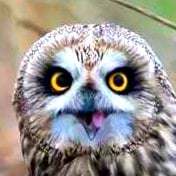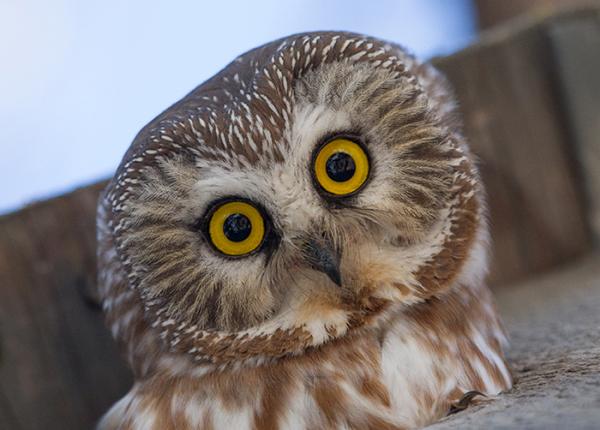This match features a pair of wise looking owls. Which one has the smarts to win today?
The Great Grey is the largest owl by overall length. Max length is around 33 inches, 84 cm, but actual mass is much less than the Blakiston’s or Eurasian Eagle, and even that of most Bubo owls like the Snowy, Great Horned, etc. It’s a real big fluffball! This thick winter coat is perfect for the coniferous taiga of the north, which is their preferred home. Even though they are found in Europe and Asia, they were not discovered until the 18th century in Canada. They have a less varied diet than most owls, eating mainly small rodents, but their massive facial disc maximizing the most tiny sounds, they can hear rodents under up to 2 feet, 60 cm, of snow!
The Spectacled Owl, while not the biggest owl in any continent, it is the largest tropical owl species at 20 inches, 52 cm, preferring the rainforests of Central and South America. It eats almost any mammal or can get its feet on, from rodents to bats, possums, crabs, snails, and even monkeys and sloths. With a wide range in habitats less hospitable for people, the Spectacled Owl has stayed relatively safe, though a species on Trinidad is now extinct due to encroachment in the rainforest there.
Which wise owl has captured your imagination? Is it the wise old Phantom of the North, the Great Grey, or the young, preppy looking Spectacled Owl? Upvote you choice now!


“Rictal bristles” is new to me! I wonder if this qualifies as parallel evolution.
Skimming the intro to the linked article, it says about 10% of birds have them, so it sounds likely. I’m sure some birds, even with moveable eyes, have beaks that are too large or curved to see their mouth, so they’ve all had to solve the problem of a huge blind spot right in front of them. A whisker equivalent seems a like a simple and reliable evolutionary pathway that would work for a number of different birds.